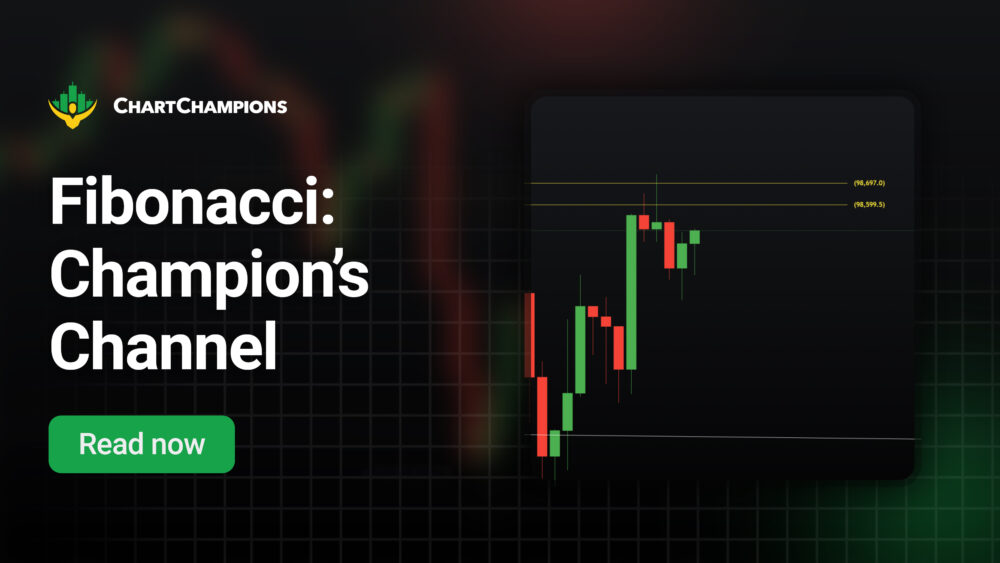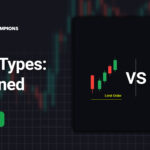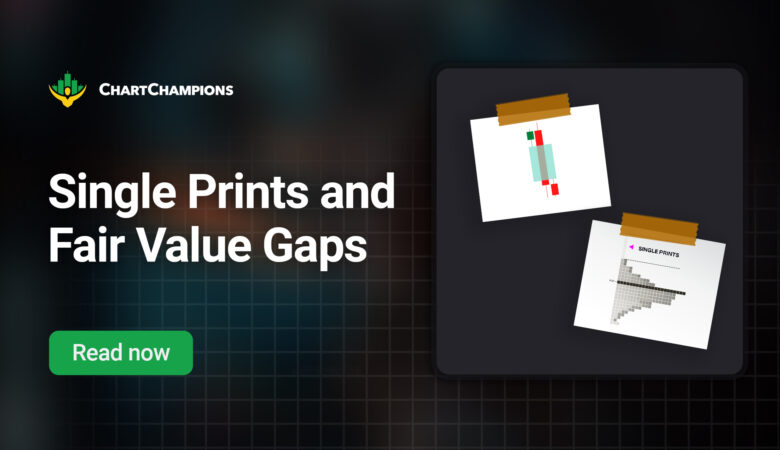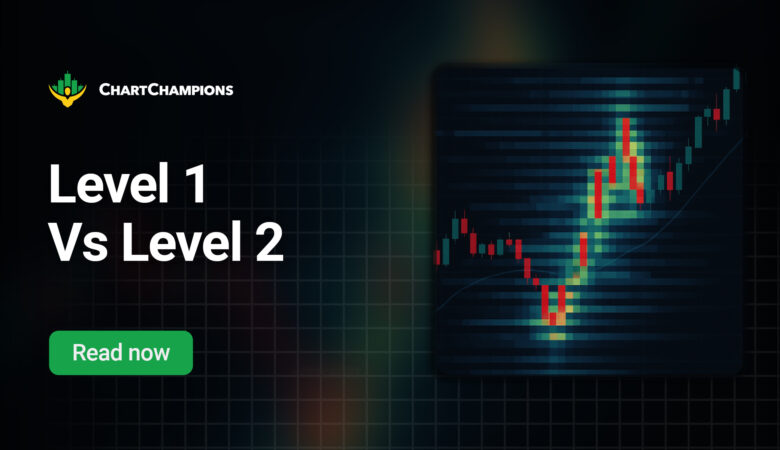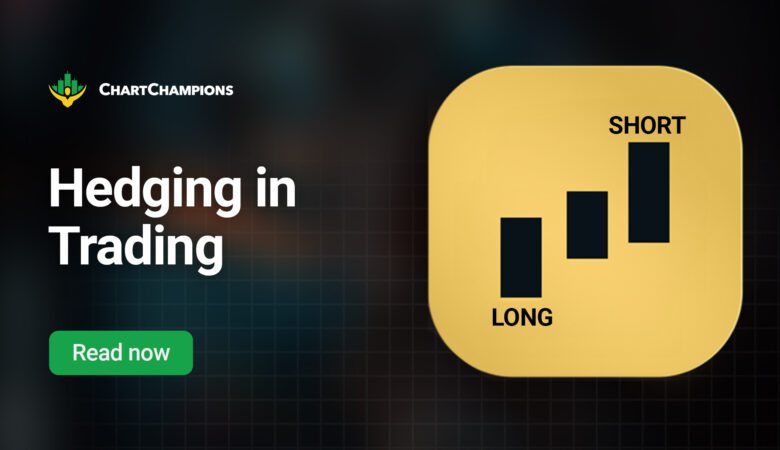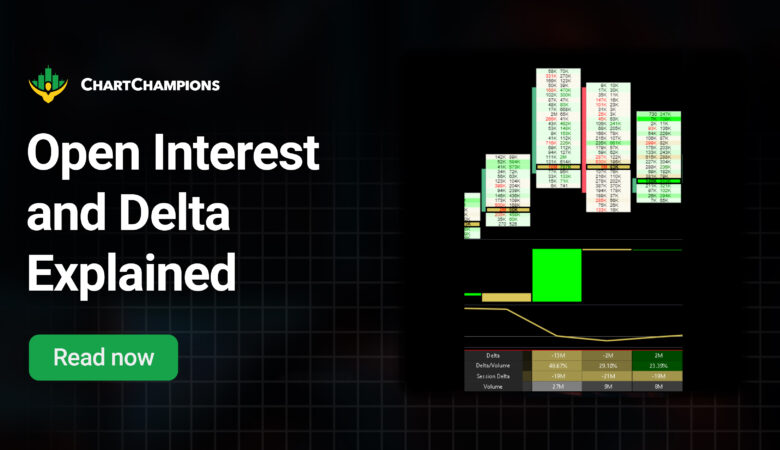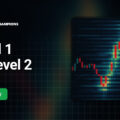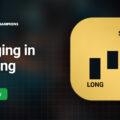The Fibonacci sequence and the golden ratio exist everywhere in many forms, from human DNA to spiral galaxies and natural events such as hurricanes. Unsurprisingly, the Fibonacci sequence also plays a role in finance and trading.
The Fibonacci golden ratio significantly influences market dynamics, price action, and technical analysis in a predictive manner. It is essential to remember that behind those price charts are real people trading in an auction-style market.
In this article, we will learn how to use the Fibonacci Retracement tool, save templates in TradingView and set up the Champion Channel, also known as the CC Fib level. This level is well-known in our community due to the high probability of price reaction. Having it in your trading arsenal could make a significant difference.
How to Draw a Fibonacci Retracement
Before exploring the different Fibonacci retracement levels, we must understand how to draw them correctly. Selecting the best pulls is crucial for obtaining the best results in our analyses.
Market trends do not last forever. Small retracements are naturally expected within every impulsive movement.
But where are these retracements most likely to happen? Where can we find the best opportunity for a bounce without getting trapped buying a dip that never ends? This is where the Fibonacci retracement tool comes into play.
Fibonacci retracement is always drawn from left to right, so the selection of the pulls is also done from left to right.
- In a bullish impulsive move, we select the lowest point where the uptrend begins up to its highest point. This way, we can observe the different Fibonacci levels acting as support.
- In a bearish impulsive move, we select the highest point where the downtrend begins, down to its lowest point. This way, we can observe the different Fibonacci levels acting as resistance.
How to Select the Best Fibonacci Pull
It is essential to distinguish between impulsive and corrective moves to understand how to select the best Fibonacci pull.
- An impulsive move in trading refers to a strong and aggressive price movement in a specific direction within a short period.
- A corrective move is a temporary price retracement that follows an impulsive move. As the market consolidates, corrective moves progress slowly and require more time.
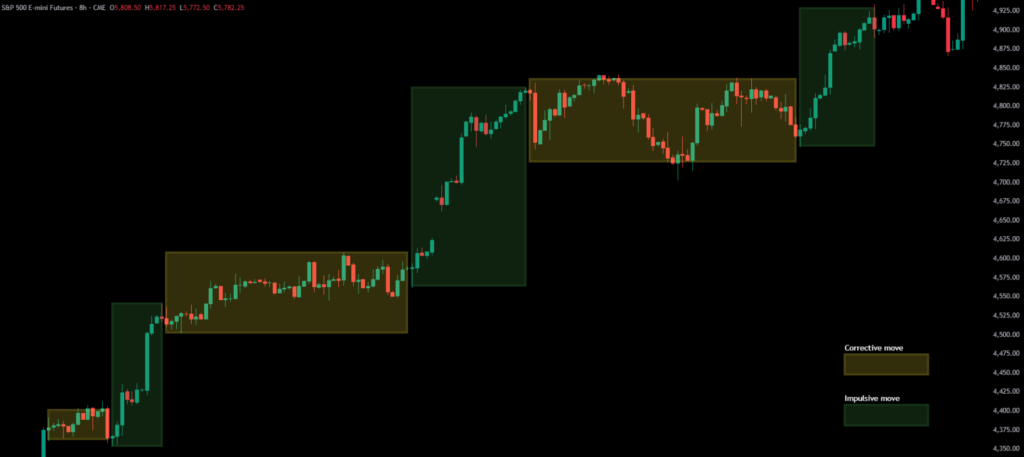
We always use impulsive moves to draw our Fibonacci pulls. The idea is to find the best confluence of support or resistance to follow the main trend.
For example, when the price structure remains bearish, creating lower highs and lower lows, we focus on looking for short positions to follow the primary trend. In this scenario, we use Fibonacci levels as resistance.
Conversely, when the price structure is bullish, creating higher highs and higher lows, we focus on looking for long positions.
Pro Tip: Avoid short-term trades when the price reaches a key support or resistance area in higher timeframes. Zoom out on the chart, locate the main trend and draw your Fibonacci retracement. Mark the most important support or resistance levels in higher timeframes.
Using Fibonacci in Ranges
At this point, you may wonder if it is possible to use corrective moves to draw Fibonacci pulls. The simple answer is: Yes. But it is not recommended.
A corrective move means the price is in a consolidation or range phase. At Chart Champions, we follow an essential principle: “Trade the range until it breaks.” This means we only trade the extremes of the range, but that discussion will be left for another article.
Understanding the market context is crucial. We always recommend avoiding trades during indecision phases to prevent getting trapped in the middle of a range. For this reason, we avoid using Fibonacci in ranging markets.
In this example, we can identify a bearish trend followed by a consolidation after an impulsive move. When we draw a Fibonacci retracement from the high of the range to its low, we can see that resistance forms at the $99,005 area. If we also draw a Fixed Range, we notice the confluence of the VAH with the 0.618 Fib level.
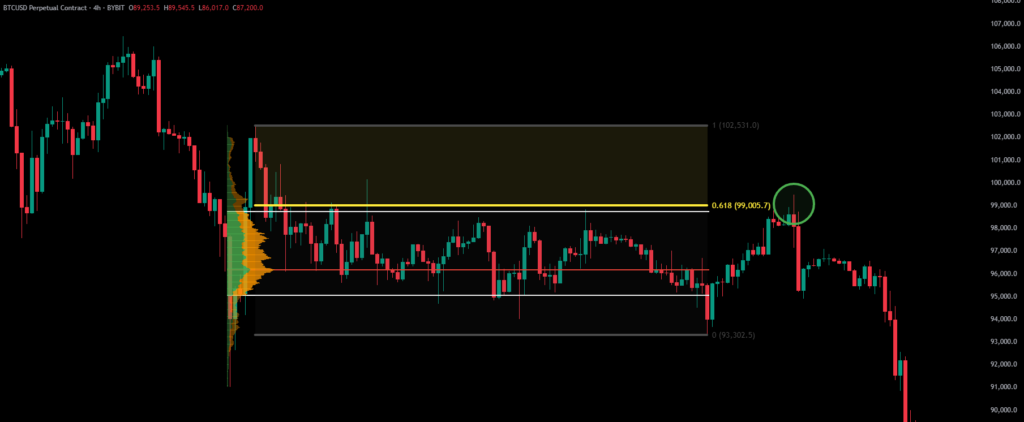
No confluence, no trade.
Fibonacci Numbers in Trading
Fibonacci numbers provide price levels where a pullback reaction is more likely before continuing the primary trend. The most common retracement levels in trading are 0.236, 0.382, 0.50, 0.618, and 0.786. All of these have applications in trading.
Aggressive Trends
When facing an aggressive trend, the most common Fibonacci retracement level to expect is 0.382, a significant level in the stock market.
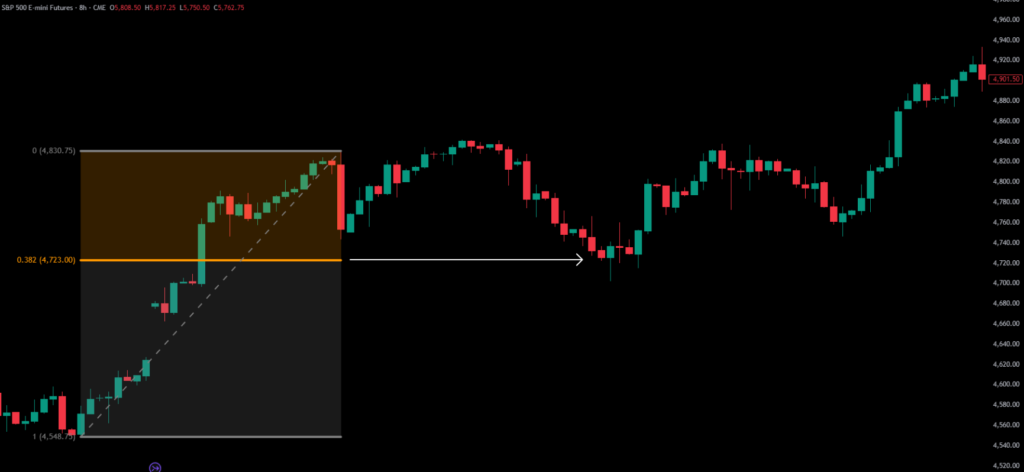
The Golden Ratio
The Golden Ratio is the 0.618 Fibonacci level, a typical level for retracement in cryptocurrencies. Being aware of this level provides a significant edge in trading Bitcoin and Altcoins.
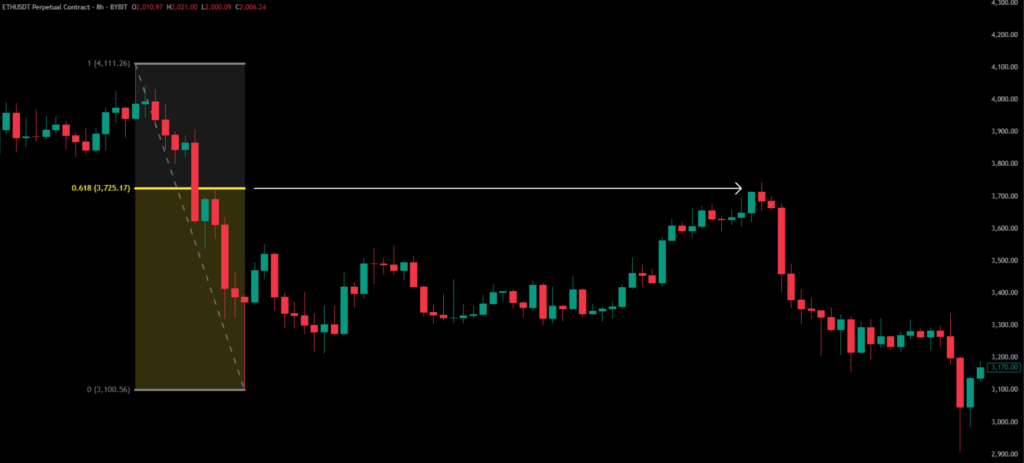
The Equilibrium Price
The equilibrium price (EQ) is at the 0.5 Fibonacci level. This level is crucial in the futures market as it serves as support or resistance, making it likely to trigger a reaction.
At Chart Champions, we use the previous day’s EQ for scalping and day trading.
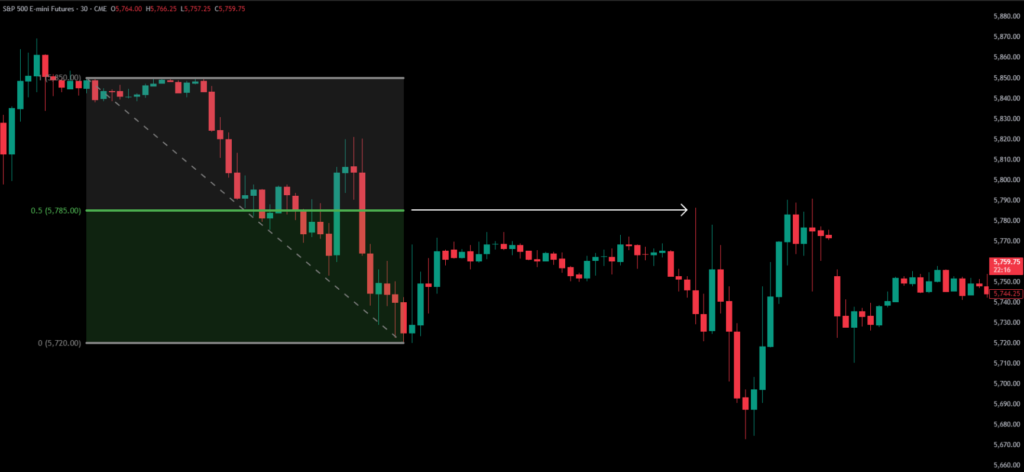
The Champion Channel
The Champion Channel is a Fibonacci retracement level between 0.618 and 0.66, also known as the CC Fib Level. It acts as a strong support/resistance level for cryptocurrencies.
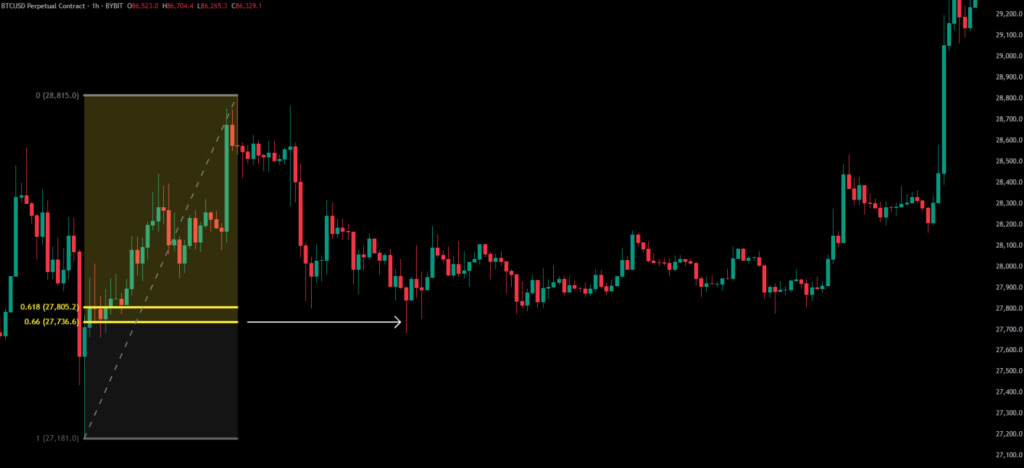
How to Save a Fibonacci Template in TradingView
Since different Fibonacci levels apply depending on the context, TradingView allows users to quickly access pre-set levels, saving time when adjusting for each situation.
- Draw the Fibonacci retracement tool on the chart and double-click on it to open the settings.
- Enable only the levels required for that specific template. For example, activate only the 0.618 and 0.66 levels to save the Champion Channel.
- Click on Templates → Save As.
- Assign a name to identify the template and click Save.
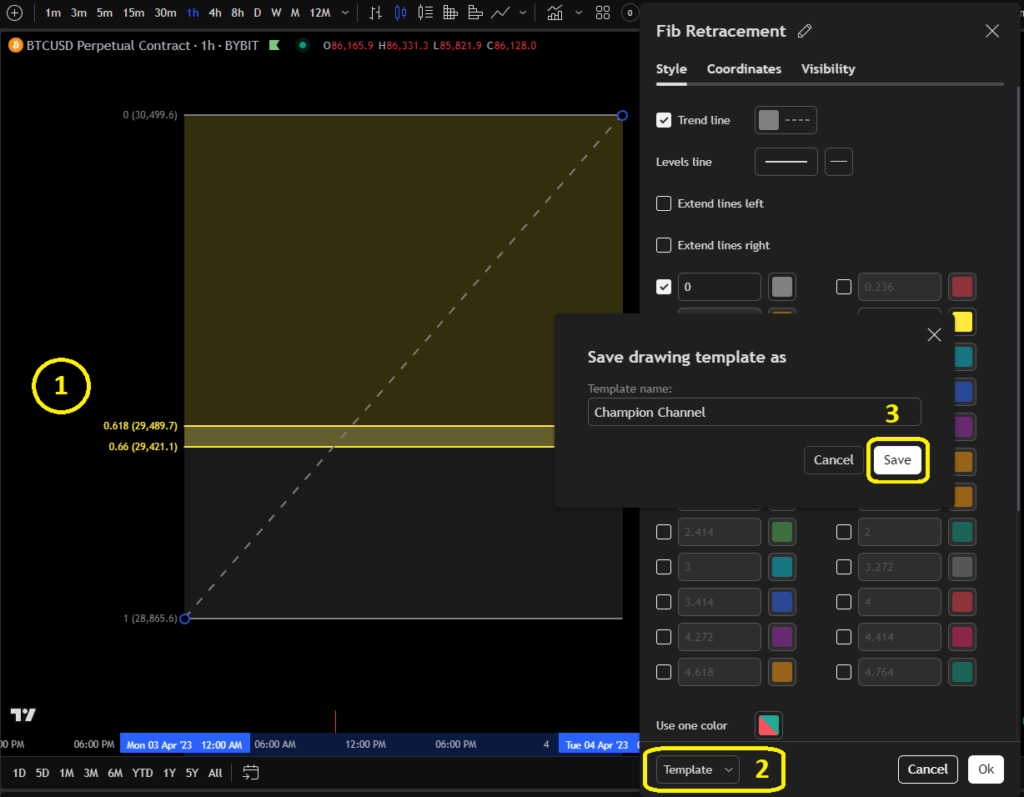
When to Use Fibonacci Levels Based on Log Scale
Enable logarithmic scale trading levels when analyzing the market in higher timeframes while the log view is activated on the chart.
Conclusions
At Chart Champions, we primarily use the Fibonacci retracement tool as a confluence factor. We only take trades where two or more confluences align for a specific setup.
Since it is a versatile tool, Fibonacci retracement can be combined with anchored VWAPs, session VWAPs, moving averages (SMA or EMA), horizontal levels, or other preferred indicators. The more confluences, the better.
The main idea is identifying the best support or resistance levels within a retracement for a bullish or bearish trend.
Proper risk management is crucial when using Fibonacci or any other tool. We strongly recommend developing a solid risk management plan tailored to your strategy and capital.








